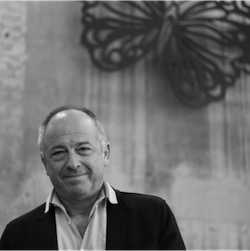My new year’s resolution? Think more creatively.
Share
Nir Wegrzyn writes that to encourage creative thought we need to focus less on teaching people how to perform tasks and more on how to think.
_
Sponsored content: This article was written by BrandOpus and published by Marketing to promote BrandOpus’ event ‘The Edge of Branding – the tale of the irrational consumer and over-rational marketer’ which takes place in Melbourne on Thursday 2 February. Register for your free ticket now »
_
 For a word that barely existed in our vocabulary 100 years ago, ‘creativity’ has become such a topic of interest that it’s almost deemed a human right to have your creativity nurtured without which an individual barely exists and indeed the human race is in danger to perish…as education advisor Ken Robinson famously implied in his TED talk.
For a word that barely existed in our vocabulary 100 years ago, ‘creativity’ has become such a topic of interest that it’s almost deemed a human right to have your creativity nurtured without which an individual barely exists and indeed the human race is in danger to perish…as education advisor Ken Robinson famously implied in his TED talk.
But what is ‘creativity’? If we rewind 500 years the notion of creativity was restricted exclusively to the divine. Only God could ‘create’, everything else, that would likely be deemed acts of creativity today were simply vehicles for God’s ultimate creativity. Michelangelo was not creative. He was a painter, albeit an incredibly skilled one who, inspired by the Muses, used his paintbrush to deliver representations of God’s creativity. He himself could not be ‘creative’.
Then, in the late 19th – early 20th centuries a revolution occurred. Nietzsche proclaimed that “God is dead”, and Rodin was quoted as saying, “The artist must create a spark before he can make a fire and before art is born, the artist must be ready to be consumed by the fire of his own creation.”
Both are examples of how the term ‘creativity’ was broken free from the shackles of the divine and made accessible to all. Suddenly, anyone could be creative.
From there we have developed an obsession with the idea that everyone and everything can and will be creative.
But what is this chalice called ‘creativity’ and what does it look like? How do we know when/how/why we are being creative? As a design agency I’m sure we are often perceived as being the archetypal ‘creative space’ filled to the rafters with people that serve up slices of creativity on a daily basis. Clients walking through our doors and ordering up a plate of something creative with a side of triple-cooked innovation as a matter of course.
The reality is far from that. What we do is design things and there’s a big difference.
Alfred North Whitehead noted in 1923 that “creativity is not a verb, it’s a noun”. There is no such act as ‘being creative’. What would it look like? How would you perform being creative? Sit in a room and do what?
Creativity, or being creative, is when you manage to do something new or original and this can be at any time, in any field and by anyone. It’s not going to be forced out just because someone decides to let their staff play ping pong in their office at any time of the day. It’s also worth remembering that creativity is not a tap that is simply turned on and drunk from at will. Creativity cannot exist as a department within an organisation, just in the same way that it’s impossible to assign a process or routine to ‘being creative’. Given the opportunity to develop the appropriate mind-set is the only way to allow creative thoughts and ideas to flourish.
What we need to focus on is encouraging a mind-set that allows people to be imaginative and work with ideas. One that rejects what is common sense today and everyday, in favour of one that is willing and able to challenge the norm and see thing differently – always.
In that respect we need to focus less on teaching people how to perform tasks, but rather how to think. Increasingly, as a population we are moulding people to think logically about how to be problem solvers, to be rationally minded.
What we’re lacking is the encouragement to imagine more, to learn how to think beyond what we think we know already – a mindset that would enable creative ideas to emerge. How we nurture those ideas is a whole other story.
_
Sponsored content: This article was written by BrandOpus and published by Marketing to promote BrandOpus’ event ‘The Edge of Branding – the tale of the irrational consumer and over-rational marketer’ which takes place in Melbourne on Thursday 2 February. Register for your free ticket now »
_















